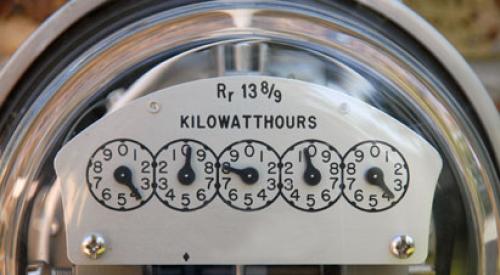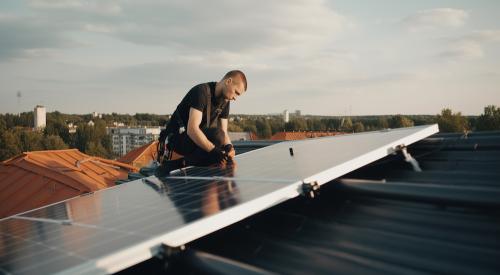In its second year of testing, the National Institute of Standards and Technology’s net-zero energy residential testing house managed to quadruple the amount of surplus energy it sent to the power grid. This information was gathered between February 2015 and January 2016 for the house, which is located in Gaithersburg, Md.
According to Phys.org, the biggest reasons for the increase in surplus energy is due to changes in the ventilation and temperature control systems in conjunction with a mild winter, resulting in less energy required to heat the house. The second test year saw the energy surplus increase 1,655 kilowatt hours over the first with 90 percent of the increase coming from reduced energy use. The remainder of the surplus can be accredited to a slight increase in the amount of energy generated by the photovoltaic solar panels.
The mild winter was to thank for about half of the drop in energy use while the other half came from adjustments made to improve the energy efficiency of the house. One major technical tweak led to the most significant gains in efficiency, according to Hunter Fanney, who leads the research at the Net-Zero Energy Residential test Facility. The tweak changed the control logic associated with the house’s heating system. As Fanney explained, "During the first year the control logic was 'overanxious' during cold-weather conditions. It often energized the back-up electric resistance heating system, even though the heat pump was capable of maintaining the desired indoor temperature.”
The solution was to switch to a “more patient” strategy that would maintain the same level of comfort for those within the house, but reduced the use of electric resistance heat.
The 2,700-square-foot test house meets LEED Platinum standards without sacrificing modern amenities many homeowners want in a home. The home features solar water heating and a solar photovoltaic system that uses 32 panels that produce 320 watts of electricity each. Even if the photovoltaic system was downsized by as much as 25 percent, the researchers still believe the house would be able to meet its net-zero goals.
The largest surplus of electricity was generated in May 2015 for the testing period as almost twice as much photovoltaic energy was produced as energy was consumed in that month. February 2015 saw the most energy consumed while December 2015 saw the least amount of Photovoltaic energy produced. Overall, nine of the 12 months in the second year experienced a larger amount of photovoltaic energy produced than energy consumed by the house.









